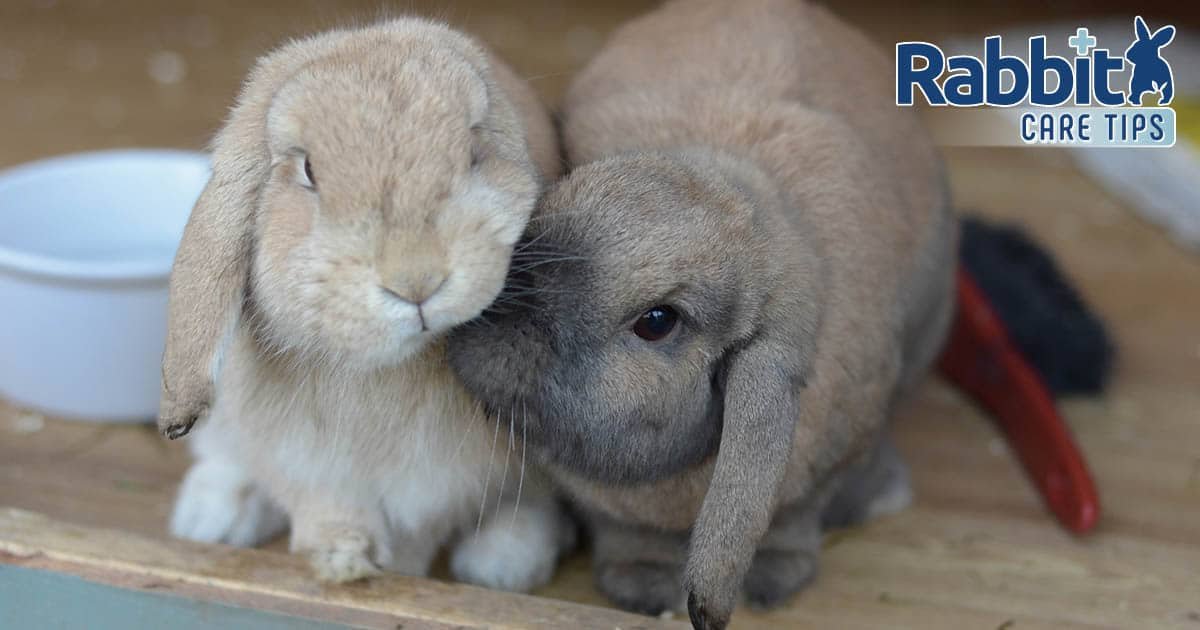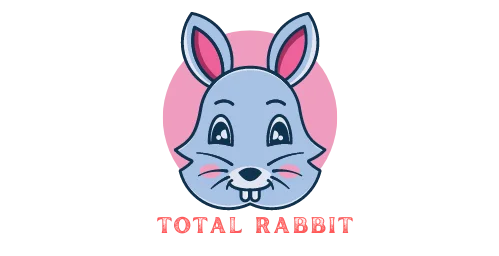How To Care For Your Lop Eared Rabbit

Lop-eared rabbits are one of the most popular pet rabbit breeds. They are known for their relaxed and laid-back personalities, and they make great additions to any family. If you’re thinking about adding a lop-eared rabbit to your home, there are a few things you need to know about caring for them.
First and foremost, lop-eared rabbits require plenty of exercise. They should have a large enclosure or play area where they can run around and explore. It’s also important to provide them with plenty of toys and chewable items to keep them occupied.
When it comes to food, lop-eared rabbits should have a diet that consists mostly of hay, fresh vegetables, and a small amount of pellets. Avoid giving them too many sugary treats as this can cause health problems down the road.
- Purchase a lop eared rabbit from a reputable breeder or pet store
- Bring your new rabbit home and place him in a secure, enclosed area such as a hutch or pen
- Feed your lop eared rabbit a diet of high quality hay, fresh vegetables, and a small amount of pellets
- Avoid feeding him too many treats as this can lead to obesity
- Provide your rabbit with plenty of clean water at all times
- grooming is important for keeping your lop eared rabbit healthy and free from mats and tangles
- Brush him with a soft brush several times per week, paying special attention to his long ears
- You may also need to trim his nails on occasion using special Rabbit nail trimmers available from most pet stores
- 6-8 weeks
How To Take Care Of A Mini Lop Rabbit
How to Tell What Kind of Lop Eared Rabbit I Have
Lop-eared rabbits are a popular breed, and it’s not hard to see why! They’re cute, cuddly, and make great pets. But if you’re thinking about getting a lop-eared rabbit, you might be wondering how to tell what kind of lop-eared rabbit you have.
There are two main types of lop-eared rabbits: English Lops and French Lops. Here’s a quick guide to help you tell them apart:
English Lops have long bodies and large ears that flop down over their faces.
They come in a variety of colors, including black, blue, chocolate, lilac, white, and more.
French Lops also have long bodies and large ears that flop down over their faces. However, their ears are shorter than those of English Lops.
French Lops come in similar colors to English Lops.
Lop-Eared Rabbit Breeds
There are many different lop-eared rabbit breeds, each with their own unique appearance and personality. Some of the most popular lop-eared rabbit breeds include the Mini Lop, Holland Lop, and English Lop.
Mini Lops are one of the smallest lop-eared rabbit breeds, weighing in at only 2-4 pounds when fully grown.
They are known for their friendly and laid back personalities, making them great pets for families with children. Holland Lops are slightly larger than Mini Lops, weighing in at 4-6 pounds when fully grown. They have a reputation for being very active and playful rabbits, making them ideal pets for people who want a more interactive pet.
English Lops are the largest of all the lop-eared rabbit breeds, reaching up to 12 pounds when fully grown. They are known for being gentle giants, and make great companions for people who want a calm and loving pet rabbit. No matter which breed you choose, you’re sure to fall in love with your new lop-eared friend!
Lop-Eared Rabbit Health Problems
Lop-eared rabbits are cute and cuddly, but they can also be susceptible to health problems. Here are some of the most common health problems that lop-eared rabbits face:
1. Ear infections: Because of their floppy ears, lop-eared rabbits are more prone to ear infections than other rabbit breeds.
If you notice your lop-eared rabbit shaking its head or scratching its ears more than usual, it could be a sign of an ear infection. Ear infections can be treated with antibiotics, but it’s important to catch them early.
2. dental problems: Lop-eared rabbits have teeth that grow continuously throughout their lives.
This can lead to overgrown teeth, which can cause pain and make it difficult for the rabbit to eat correctly. Rabbits with overgrown teeth may drool or refuse to eat altogether. Regular checkups with a veterinarian can help ensure that your lop-eared rabbit’s teeth stay healthy and properly trimmed.
3. respiratory problems: Another common health problem in lop-eared rabbits is respiratory issues. Because of their long ears, lop-eared rabbits are more likely to develop allergies or asthma. If you notice your lop-eared rabbit sneezing or wheezing more than usual, it’s important to take them to the vet right away as these symptoms can worsen quickly and become life threatening .
Largest Lop Eared Rabbit Breed
There are many different types of lop eared rabbits, but the largest is the French Lop. This breed can weigh up to 12 pounds and has large, floppy ears that hang down over its face. The French Lop is a popular pet rabbit due to its docile and friendly personality.
It is also relatively easy to care for, although it does require some grooming to keep its coat looking healthy and prevent mats from forming.

Credit: www.wikihow.com
Are Lop Eared Rabbits Hard to Take Care Of?
Lop-eared rabbits are not difficult to take care of, but there are a few things to keep in mind. Because their ears droop down, they are more susceptible to ear infections. Be sure to check their ears regularly and clean them as needed.
Lop-eared rabbits also tend to have more dental problems than other rabbit breeds, so good oral hygiene is important. Their diet should include hay, fresh vegetables, and a small amount of pellets.
How Do You Take Care of a Lop Eared Rabbit?
Lop eared rabbits are a popular breed of rabbit, known for their unique ears that hang down from the sides of their head. While they may look different than other breeds of rabbits, they still require the same basic care in order to stay healthy and happy. Here are some tips on how to take care of your lop eared rabbit:
1. Provide them with a spacious enclosure. Lop eared rabbits need plenty of space to run and play, so make sure their enclosure is large enough for them to move around freely.
2. Include hiding places and toys.
Like all rabbits, lop eared rabbits love to hide and chew on things, so include plenty of hiding places (such as cardboard boxes or tunnels) and chewable toys in their enclosure.
3. Feed them a balanced diet. A healthy diet for a lop eared rabbit includes hay, fresh vegetables, and a small amount of pellets.
Avoid giving them sugary treats or processed foods as these can cause health problems down the road.
4. Keep their fur clean and brushed. Lop eared rabbits have long fur that can become matted easily if not properly cared for.
Do Lop Eared Rabbits Like to Be Held?
There’s no simple answer to this question as every rabbit is different and will have their own preferences. Some lop eared rabbits may enjoy being held, while others may not be so keen. The best way to find out if your lop eared rabbit likes being held is to simply ask them!
If your rabbit doesn’t seem too thrilled about being picked up, then it’s probably best to leave them be. Forcing them into a situation that makes them uncomfortable can lead to stress and even aggression. However, if your lop eared rabbit does enjoy being held, then go ahead and give them a cuddle!
Just be sure to support their back end so they don’t feel like they’re going to fall.
What Do Lop Bunnies Like to Eat?
Lop bunnies are rabbits that have been bred to have lop ears, meaning their ears hang down close to their face instead of standing up. These rabbits make great pets because they are typically docile and good-natured. As far as what lop bunnies like to eat, they are actually not that different from other rabbits when it comes to diet.
A healthy diet for a lop bunny includes hay, fresh vegetables, and a small amount of pellets. Hay should make up the majority of their diet, as it is essential for their digestive health. Fresh vegetables can be given daily and should include items like leafy greens, carrots, and broccoli.
A small handful of pellets per day is also recommended to provide them with some extra nutrients.
In terms of treats, lop bunnies enjoy many of the same things as other rabbits. This includes things like apples, bananas, and even occasional pieces of cooked chicken or hard-boiled egg.
As long as treats are given in moderation, they can be a great way to bond with your lop bunny while providing them with some extra nutrition.
What Are the Basic Care Needs for Lop Eared Rabbits?
Lopping ear care for rabbits is crucial to ensure the well-being of these adorable pets. Regularly cleaning their drooping ears helps prevent infections and remove any debris. Additionally, providing a balanced diet with hay and fresh vegetables promotes both dental health and overall vitality. Providing a safe and spacious living environment is also essential for their happiness.
Conclusion
Lop-eared rabbits are one of the most popular types of pet rabbits, and it’s easy to see why! Their cute, floppy ears and friendly personalities make them great pets for families with kids. But like all rabbits, lop-eared rabbits require proper care to stay healthy and happy.
Here are some tips on how to care for your lop-eared rabbit:
1. Provide a large, spacious cage for your rabbit to live in. Lop-eared rabbits are active animals and need plenty of room to run around and play.
The cage should also be equipped with a litter box, food and water dishes, and toys.
2. Feed your rabbit a balanced diet of hay, fresh vegetables, and a small amount of pellets. Avoid giving your rabbit too many treats as this can cause health problems down the road.
3. Give your rabbit plenty of exercise every day. This can be done by letting them out of their cage to run around in a safe area or by providing them with toys that encourage activity (e.g., tunnels, balls).
4. Provide your rabbit with regular vet checkups and vaccinations to keep them healthy.
Be sure to address any health concerns early on so that they don’t become serious problems later on down the road.
